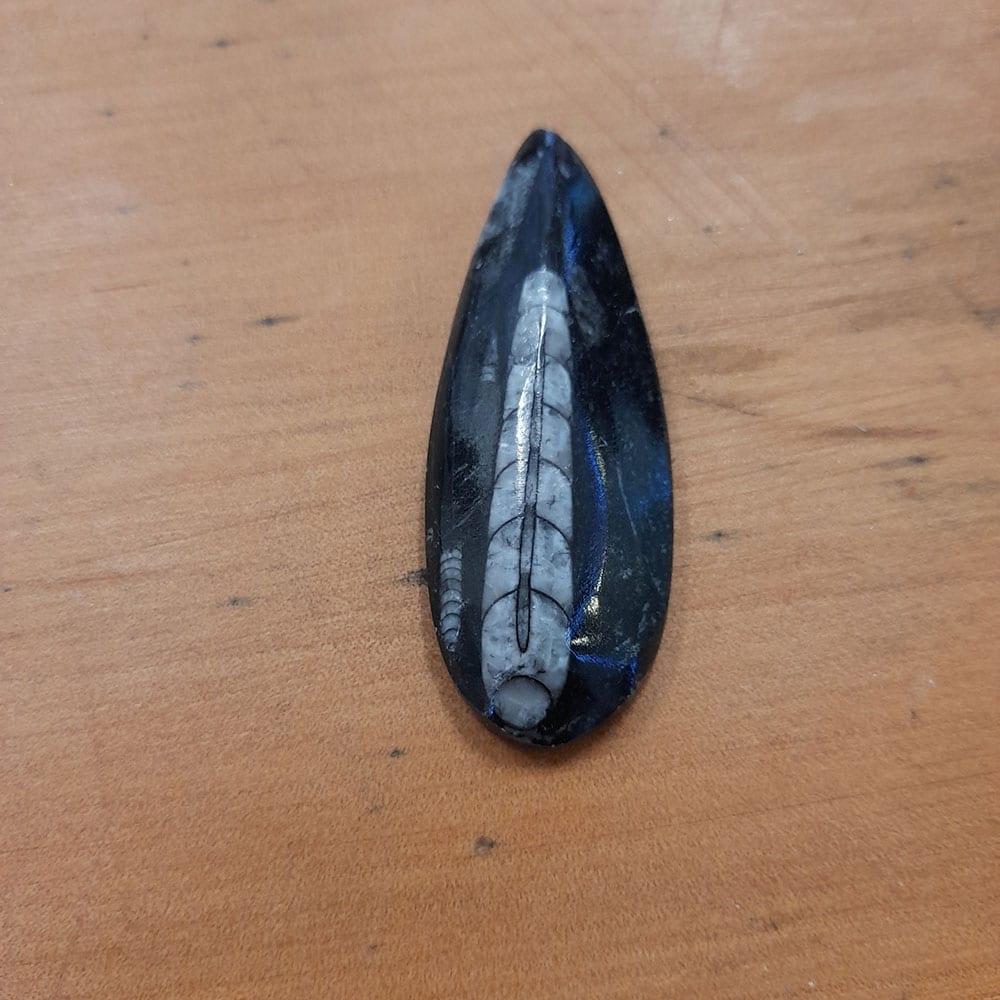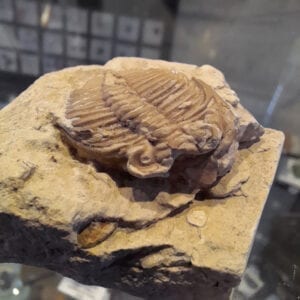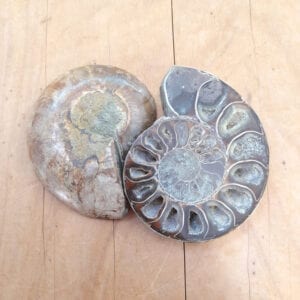Description
Orthoceras fossil 7cm x 2.5cm
approximately 400 million years old. They belonged to the Cephalopod Class which contains octopus, squid, cuttlefish and nautilus. The name means straight horn, referring to the characteristic long, straight, conical shell.
The animal lived in the last open-ended segment at the large end of the conical shell. As the body grew and the housing segment became too small, a dividing wall (septa), grew to separate the old “home chamber” from the new one. The differences in the composition of these shell parts allowed for differences in fossilisation so the parts can be seen.
The siphuncle is a tube that runs the entire length of the shell, through each of the chambers. This tube had two functions, movement and buoyancy. Once filled with water, the orthoceras could force the water out, propelling itself backward. By releasing the water and leaving air space, the tube could serve as a buoyancy device allowing the animal to rise and lower itself to different depths.
These straight shelled nautiloids ranged in size from less than a 1cm to more than 4m





